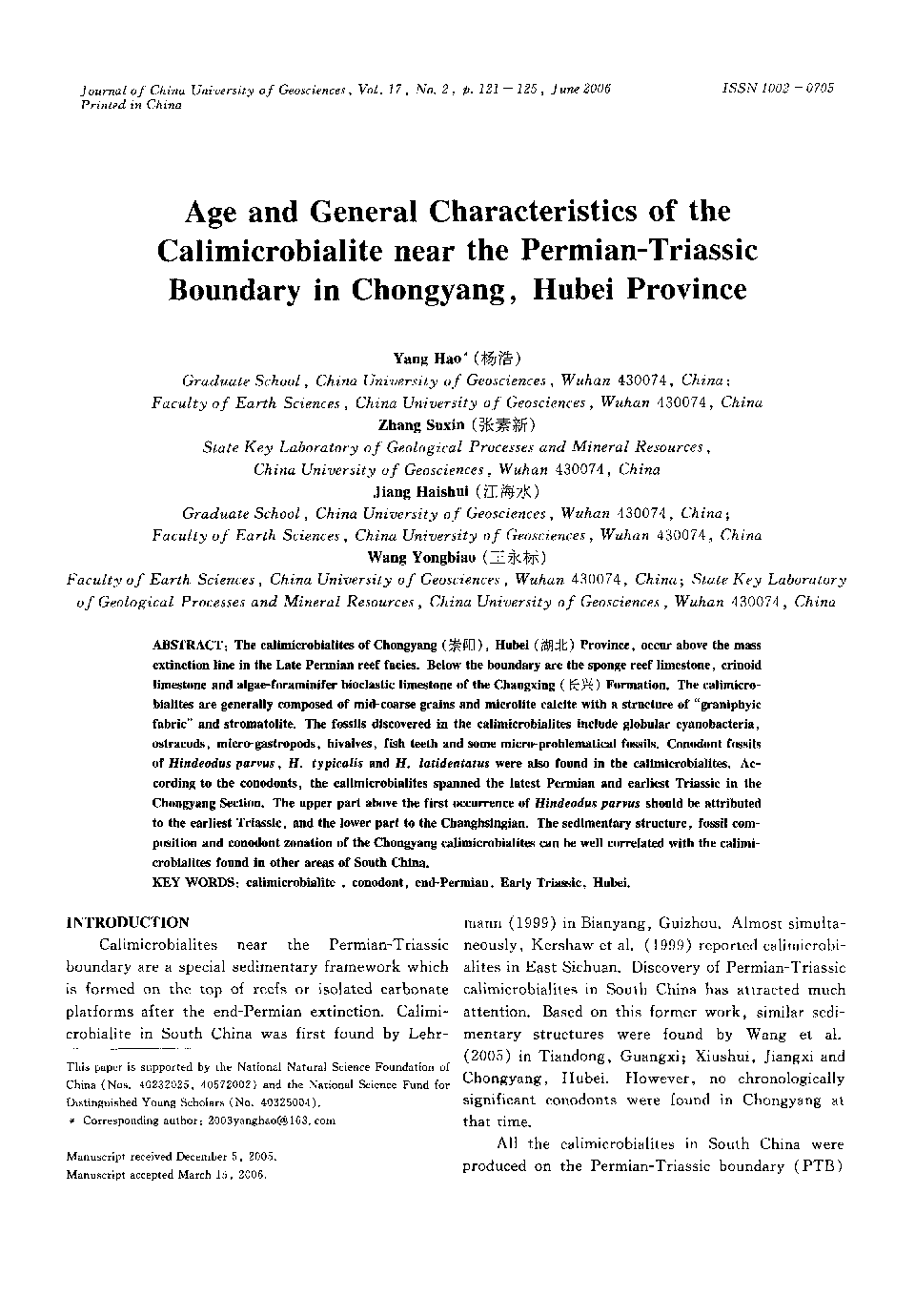| Article ID | Journal | Published Year | Pages | File Type |
|---|---|---|---|---|
| 4687871 | Journal of China University of Geosciences | 2006 | 6 Pages |
Abstract
The calimicrobialites of Chongyang (), Hubei () Province, occur above the mass extinction line in the Late Permian reef facies. Below the boundary are the sponge reef limestone, crinoid limestone and algae-foraminifer bioclastic limestone of the Changxing () Formation. The calimicrobialites are generally composed of mid-coarse grains and microlite calite with a structure of “graniphyic fabric” and stromatolite. The fossils discovered in the calimicrobialites include globular cyanobacteria, ostracods, micro-gastropods, bivalves, fish teeth and some micro-problematical fossils. Conodont fossils of Hindeodus parvus, H. typicalis and H. latidentatus were also found in the calimicrobialites. According to the conodonts, the calimicrobialites spanned the latest Permian and earlist Triassic in the Chongyang Section. The upper part above the first occurrence of Hindeodus parvus should be attributed to the earliest Triassic, and the lower part to the Changhsingian. The sedimentary structure, fossil composition and conodont zonation of the Chongyang calimicrobialites can be well correlated with the calimicrobialites found in other areas of South China.
Related Topics
Physical Sciences and Engineering
Earth and Planetary Sciences
Earth-Surface Processes
Authors
Yang Hao, Zhang Suxin, Jiang Haishui, Wang Yongbiao,
